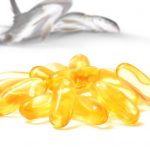Aroma Extract Dilution Analysis (AEDA) is a powerful sensory evaluation technique used in the field of flavor chemistry to identify and quantify odor-active compounds present in complex food and beverage matrices. It is a systematic approach that helps flavor chemists and sensory scientists understand the aromatic profile of a sample by determining the odor thresholds of individual volatile compounds. AEDA plays a crucial role in identifying key odorants responsible for the overall aroma, contributing to the development and improvement of flavors and fragrances. In this discussion, we will explore the principles, methodology, and applications of AEDA.
Principles of Aroma Extract Dilution Analysis
AEDA is based on the concept that the human sense of smell is highly sensitive and can detect minute amounts of volatile compounds responsible for the aroma of a substance. The technique aims to measure the aroma dilution factor (ADF) for each odor-active compound in a sample. The ADF represents the ratio of the concentration of a compound in an aroma extract to its odor threshold, i.e., the minimum concentration at which a compound can be perceived by the human nose. A high ADF value indicates that the compound contributes significantly to the overall aroma, while a low ADF suggests a minor contribution.
Methodology of Aroma Extract Dilution Analysis
- Sample Preparation: The first step in AEDA is to prepare an aroma extract of the sample. This is typically done by solvent extraction using a volatile solvent like diethyl ether or dichloromethane. The volatile compounds responsible for aroma are extracted from the sample matrix into the solvent.
- Serial Dilution: The aroma extract is then serially diluted using an odorless solvent (e.g., n-hexane or ethyl acetate) to create a series of dilutions, each with decreasing concentration of aroma compounds.
- Sensory Evaluation: Trained panelists, often with expertise in sensory analysis and flavor chemistry, evaluate the aroma of each dilution. They start with the most concentrated dilution and proceed through the series, sniffing each sample and noting any perceived aroma.
- Odor Threshold Determination: The odor threshold is determined when the panelists can no longer detect the aroma in the dilution.
- Calculation of ADF: The ADF is calculated as the ratio of the dilution factor (reciprocal of dilution ratio) at the threshold of detection to the initial dilution factor.
Applications of Aroma Extract Dilution Analysis
- Flavour Characterization: AEDA helps in characterizing the aroma profile of a food or beverage, providing valuable insights into the major odor-active compounds contributing to its overall sensory experience. By identifying key odorants, flavor chemists can optimize formulations and develop more authentic and appealing products.
- Quality Control: AEDA is used in the food industry for quality control purposes, ensuring consistency and authenticity in flavors and aromas of various products. By quantifying odor-active compounds, manufacturers can set specific target values for their products’ aroma profiles.
- Flavor Modification: AEDA can be used to modify existing flavors or create new ones. By understanding the aroma dilution profile, flavorists can adjust the concentrations of specific odorants to achieve desired flavor modifications.
- Natural Flavoring: For natural flavorings, AEDA can help identify and quantify natural aroma compounds, contributing to the creation of authentic and natural-tasting flavors.
- Source Identification: AEDA can assist in identifying the source of off-flavors or undesirable aromas in food products. By pinpointing the key odorants responsible for the off-notes, manufacturers can take corrective actions to improve product quality.
- Product Development: In the beverage industry, AEDA is valuable for developing new alcoholic and non-alcoholic beverages, as well as for optimizing the aroma profile of existing products like wines, beers, and fruit juices.
In conclusion, Aroma Extract Dilution Analysis (AEDA) is a powerful sensory evaluation technique used to identify and quantify odor-active compounds in complex food and beverage matrices. By determining the aroma dilution factor (ADF) for each compound, AEDA provides valuable insights into the aroma profile of a sample, enabling flavor chemists and sensory scientists to optimize formulations, improve product quality, and create authentic and appealing flavors and fragrances. Its applications extend to various industries, including food and beverage, fragrance, and natural flavoring, where aroma plays a crucial role in product development and consumer acceptance.


Leave a Reply